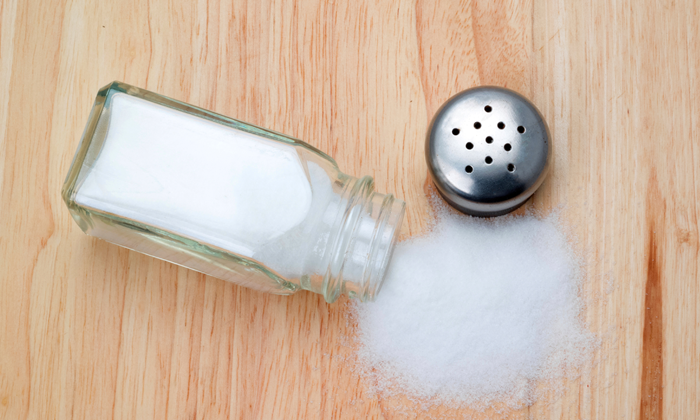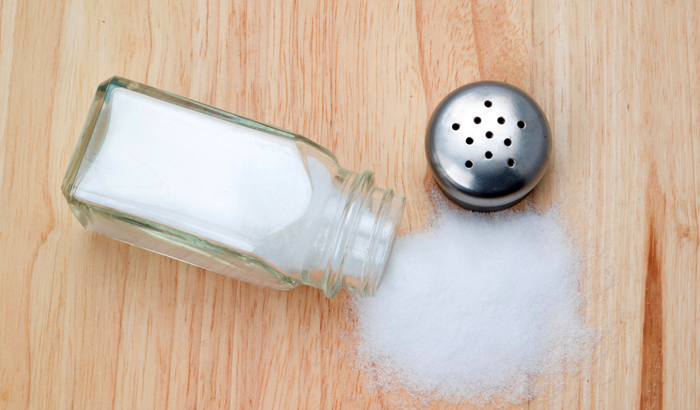
Everyone likes salt. However, it is a major contributor to high blood pressure. All of us, including children, should reduce the consumption of sodium (a salt component) to less than 2,300 milligrams per day. Adults over 50, people of African background regardless of age, and those with high blood pressure, diabetes or chronic kidney disease, should reduce sodium intake even further (1,500 milligrams per day).
1.- Adjust your palate: gradually lower salt consumption and focus your attention on the natural flavor of foods. Your appetite for salt will decrease over time.
2.- Don’t add salt: quit using salt for cooking. Do not keep a salt shaker on the kitchen countertop or table. Use spices such as herbs, garlic, vinegar, and lemon juice to season foods, or buy salt-free dressing. Try black or red pepper, basil, curry, ginger, and rosemary.
3.- Fill up on fruits and veggies: they’re naturally low in sodium. Don’t be shy and have plenty of them, both fresh and frozen. Eat one fruit or vegetable with every meal.
4.- Select dairy products and proteins with the lowest sodium level: go for nonfat and low-fat milk and yogurt instead of cheese, which contains more sodium. Choose beef, pork, poultry, fish and seafood, not foods processed with salt. Cold cuts, sausage, and canned products normally contain high amounts of sodium. Pick salt-free nuts and seeds.
5.- Think fresh: most of the sodium in our diet comes from processed foods. Cut back on them, reduce portion size, especially of foods that contain cheese (like pizza), processed meat (bacon, pork sausage, cold meat), and ready-to-eat meals (ravioli, chili, canned soup). As a rule of thumb, fresh products contain less sodium.
6.- Enjoy home cooked meals: cook at home more frequently, where it’s easier to control what’s in your food. Preparing your own food allows you to limit salt levels.
7.- Read the label: let it help you find packaged foods that are lower in sodium. Look for labels that read ‘low sodium’, ‘reduced sodium’, or ‘without added salt’.
8.- Order low sodium when dining out: some restaurants can prepare dishes with less salt if you ask; sauce and salad dressing can be served on the side.
9.- Keep an eye on condiments: foods like soy sauce, ketchup, pickles, and salad dressing are high in sodium. Choose soy sauce and ketchup brands with the least amount of sodium. Eat carrot and celery sticks instead of olives and pickles. Use only half of the seasoning mix bag.
10.- Bring up your potassium level: choose foods that rich in potassium, which can help to lower your blood pressure. Potassium is found in fruits and vegetables such as potatoes, turnip leaves, tomato sauce and juice, beans, and bananas. Other sources of potassium include yogurt, oysters, halibut, orange juice, and milk.

